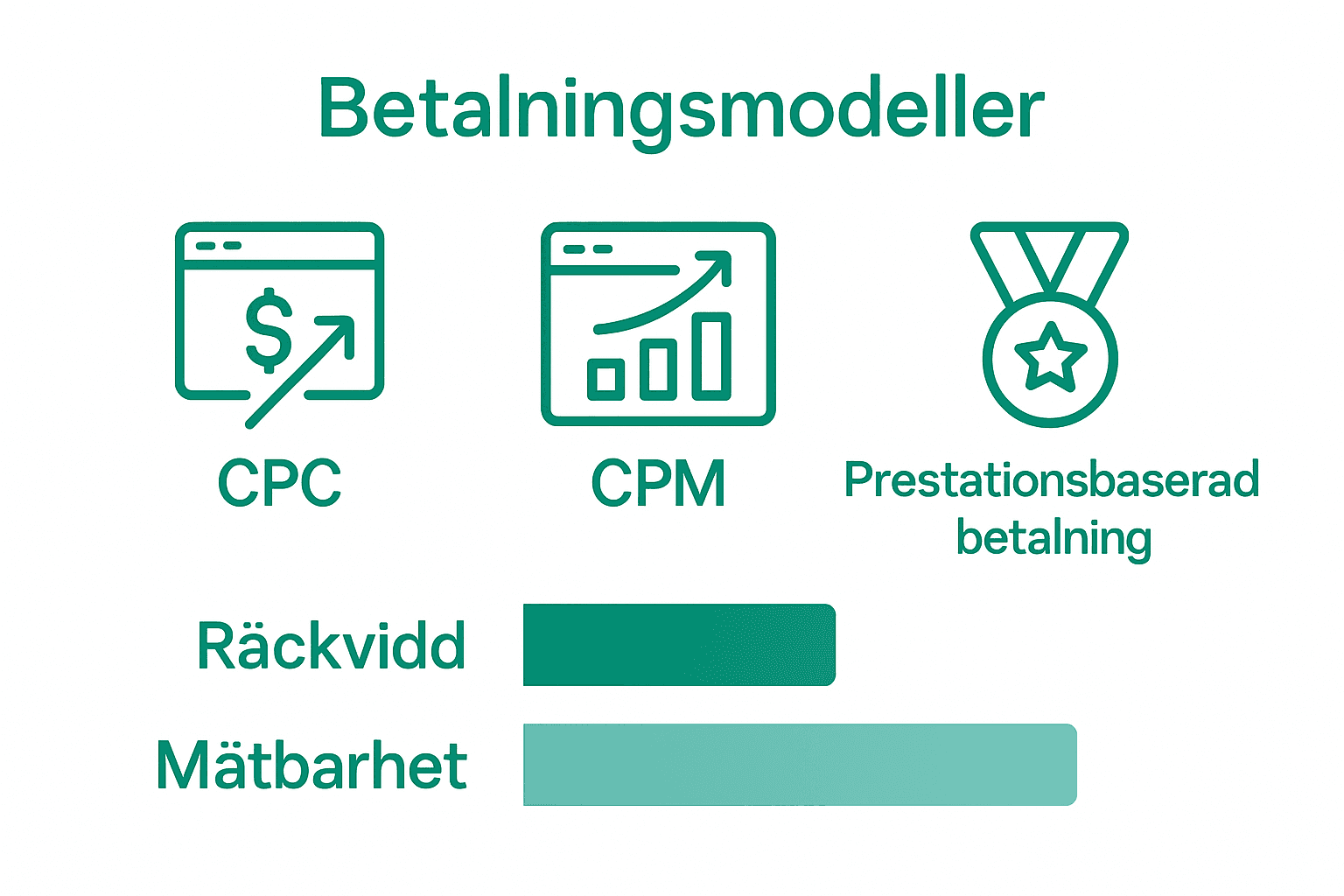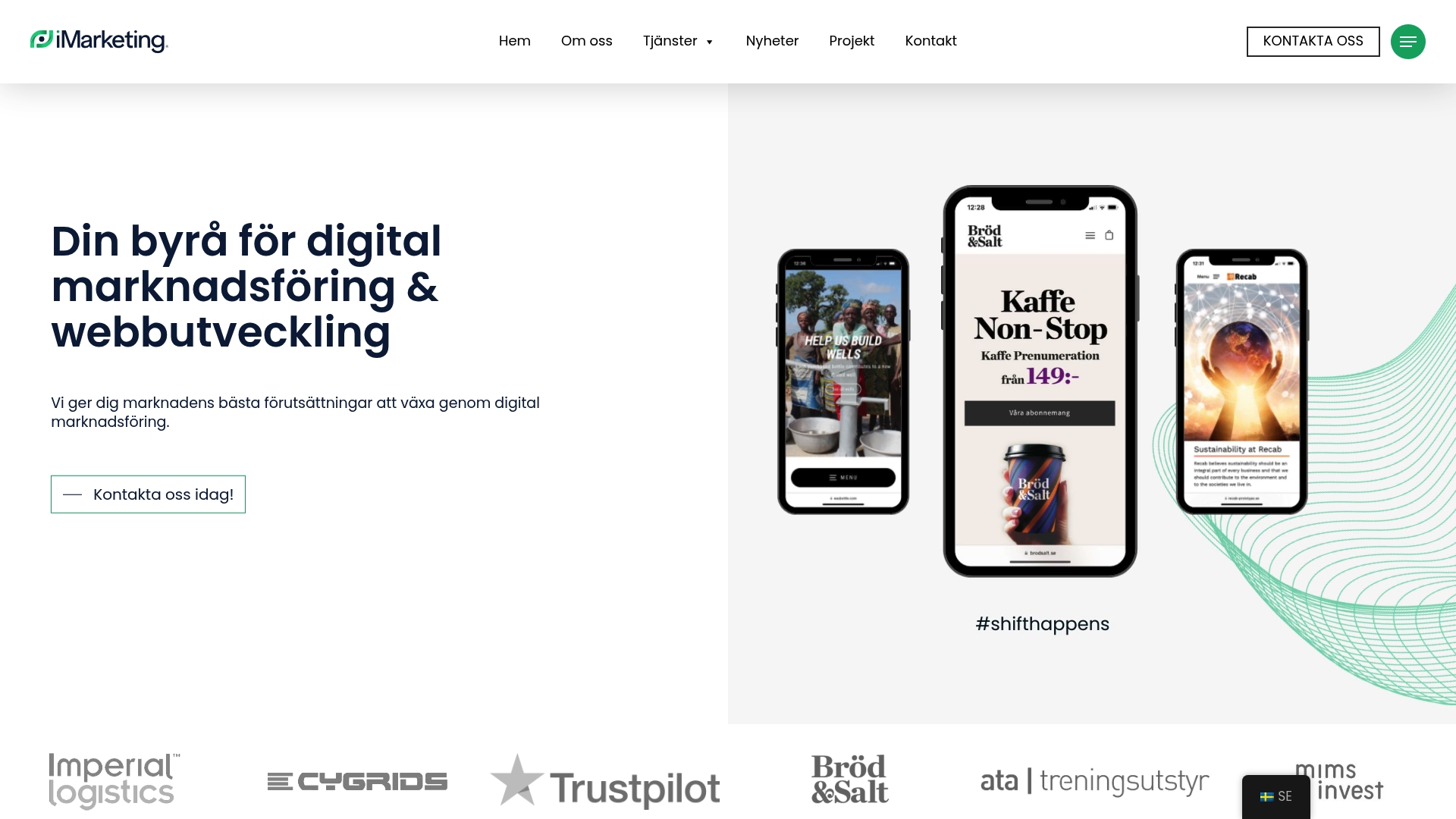Did you know that companies that invest in digital advertising can increase their visibility by over 80 percent compared to traditional methods? More and more people are discovering how easy it is to reach the right audience online and track their results in real time. By using smart technologies and choosing channels carefully, it is easier than ever to find new customers and make marketing more accurate and profitable.
Key Points
| Point | Details |
|---|---|
| Digital advertising enables real-time optimization | Companies can adjust campaigns on an ongoing basis for better results, which is a major advantage compared to traditional advertising. |
| Choice of ad formats and channels is crucial | Understand different ad formats such as search, display, and video ads to effectively reach your target audience. |
| Establish clear campaign goals and continuous measurement | Use performance metrics like CTR and conversion rate to evaluate the effectiveness of advertising. |
| Avoid common mistakes in digital advertising | Be sure to do thorough audience research and mobile optimization to maximize your ad's effectiveness. |
Table of contents
- What is digital advertising and how does it work?
- Different types of digital ads and channels
- How to choose the right advertising strategy
- Costs, reach and measurable results
- Common mistakes and how to avoid them
What is digital advertising and how does it work?
Digital advertising is a modern marketing strategy that leverages online channels to reach and engage specific target groups. According to research from Amazon Digital advertising is defined as marketing via web-based platforms, which includes websites, streamed content and other digital media in formats such as text, image, audio and video.
Unlike traditional advertising, digital advertising offers unique advantages:
- Real-time optimization of advertising campaigns
- Exactly precision in targeting
- Ability to adjust and improve campaign results on an ongoing basis
- Flexible publishing across different digital channels
According to Wikipedia Digital advertising encompasses several important categories, including:
- Search marketing
- Display advertising
- Social media ads
- Email marketing
- Mobile advertising
A particularly interesting trend is the increasing programmatic advertising, where automated systems buy and deliver ads across different platforms, making marketing both smoother and more effective for companies that want to reach their customers digitally.
Different types of digital ads and channels
Digital advertising today offers a variety of formats and channels that businesses can leverage to reach their potential customers. According to Amazon Advertising, there are several main ad formats that modern marketers can utilize, including:
Here is a comparison of the most common digital ad formats:
| Ad format | Purpose | Example channels |
|---|---|---|
| Search advertising | Visibility in searches | Google Bing |
| Display advertising | Brand exposure | Websites Apps |
| Video ads | Engaging presentation | YouTube OTT services |
| Social media ads | Audience engagement | Facebook |
| Audio ads | Reach via audio media | Spotify Podcasts |
- Search advertising (SEM) that appears in search engine results
- Display advertising with graphic ads on websites
- Video ads online, both in-stream and out-stream
- Streamed media ads (OTT)
- Audio ads for digital platforms
- Social media ads
According to Wikipedia, display advertising is dominated globally by giants like Google and Facebook, with banner ads being a particularly popular format. These ads are strategically placed on websites, in apps, and via email for maximum exposure.
For small and medium-sized companies, this represents a unique opportunity to read more about specific advertising strategies and choose channels that suit their specific market goals and budget.
 By understanding and leveraging these different digital ad formats, businesses can tailor their marketing campaigns and reach their ideal customers more effectively than ever before.
By understanding and leveraging these different digital ad formats, businesses can tailor their marketing campaigns and reach their ideal customers more effectively than ever before.
How to choose the right advertising strategy
Digital marketing strategy is about choosing the right combination of channels and technologies that suit your company's goals and target group. According to Wikipedia There is an established planning model called Digital Marketing Planning (DMP) that recommends a structured three-step process for successful digital marketing.
When choosing your advertising strategy, you should focus on:
- Facilities: Analyze your current market situation
- Strategy: Define clear goals and targeting methods
- Action: Implement and continuously optimize your campaigns
Important techniques to consider include:
- Search engine marketing (SEM)
- Content marketing
- Social media advertising
- Email marketing
- Influencer marketing
For small and medium-sized businesses looking to deepen their Google Ads knowledge, we recommend our guide which provides practical insights into how to optimize your digital advertising efforts and maximize your return.
Costs, reach and measurable results
Digital advertising offers flexible cost models that allow businesses to optimize their marketing investments. According to Amazon Advertising, there are several payment structures that businesses can choose from:
- Cost per click (CPC/PPC): Pay only when someone clicks on your ad
- Cost per thousand impressions (CPM): Pay for every 1000 ad impressions
- Performance-based payment: Pay per specific desired action
Digital analysis enables detailed measurement of ad performance through key metrics such as:
- Click-through rate (CTR)
- Scope
- Conversion rate
- Bounce rate
- Return on Ad Spend (ROAS)

For small and medium-sized businesses looking to understand ROI statistics, we recommend our in-depth guide which provides practical insights into how to maximize your digital marketing investment and ensure measurable, profitable results.
Common mistakes and how to avoid them
Digital advertising requires strategic planning and continuous optimization. According to Simpli There are several critical mistakes that businesses often make when working with online marketing.
Common pitfalls include:
- Insufficient target group research
- Ignore mobile optimization
- Avoid A/B testing
- Put unrealistic budgets
- Neglect important performance measure
According to The Omnibuzz are other common mistakes:
- Lack of clear campaign goals
- Bad ad design
- Lack of continuous evaluation
- Overlooked retargeting
- Substandard analysis systems
For small and medium-sized businesses that want to deepen their knowledge of effective copywriting, we recommend our guide which provides practical insights into how to create compelling and results-driving advertising materials.
Take the next step towards digital reach and visibility
Have you felt uncertain about how to best use digital advertising to reach your customers, choose the right channels or measure your results? In this article, we highlight the most common obstacles many companies face: difficulty choosing between search, display or social media, the risk of unclear target groups and the struggle to really see the effect of the advertising budget. It's easy to get lost among all the options and analysis systems. But you don't have to do it yourself.

Turn challenges into opportunities with us. On iMarketing.se You get access to experienced experts in both web development and digital marketing. We help you manage everything from Google Ads and advertising strategy to performance measurement to maximize your digital ROI. Contact us today and start making informed decisions that strengthen your digital presence and increase business value immediately. The guidance is here and it pays to act now.
Frequently Asked Questions
What is digital advertising?
Digital advertising is a modern marketing strategy that uses online channels to reach specific audiences through formats such as text, image, audio, and video.
What types of digital ads are there?
Types of digital ads include search advertising, display advertising, video ads, social media ads, and audio ads.
How does measuring results work in digital advertising?
Results measurement in digital advertising can be done through key metrics such as click-through rate (CTR), reach, conversion rate and return on ad spend (ROAS).
What common mistakes should be avoided when advertising digitally?
Common mistakes include insufficient audience research, lack of mobile optimization, and lack of clear campaign goals.


